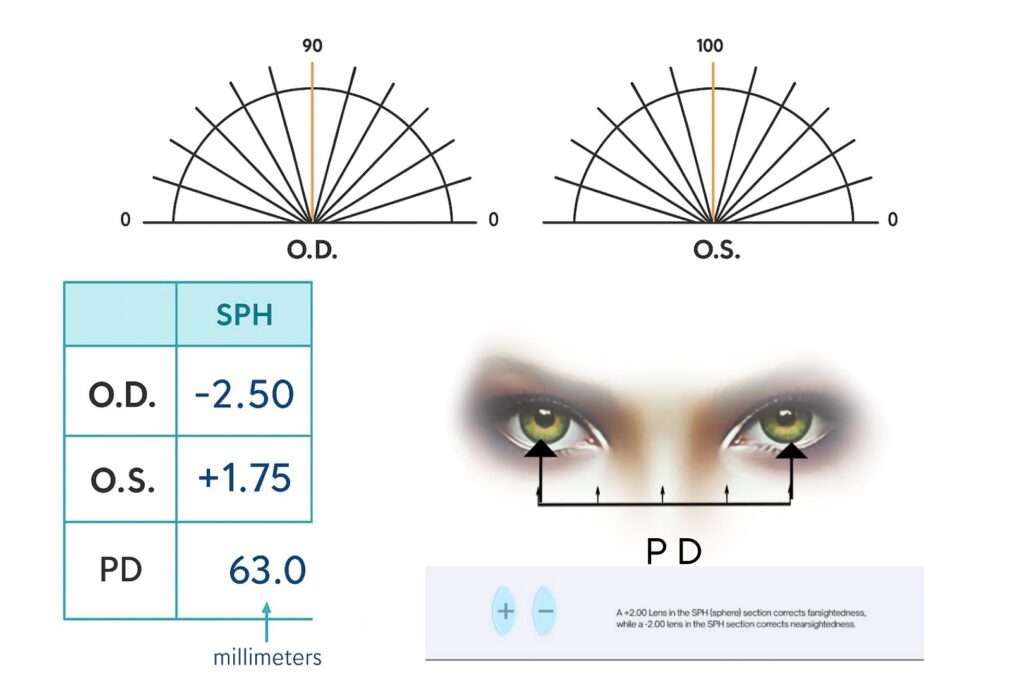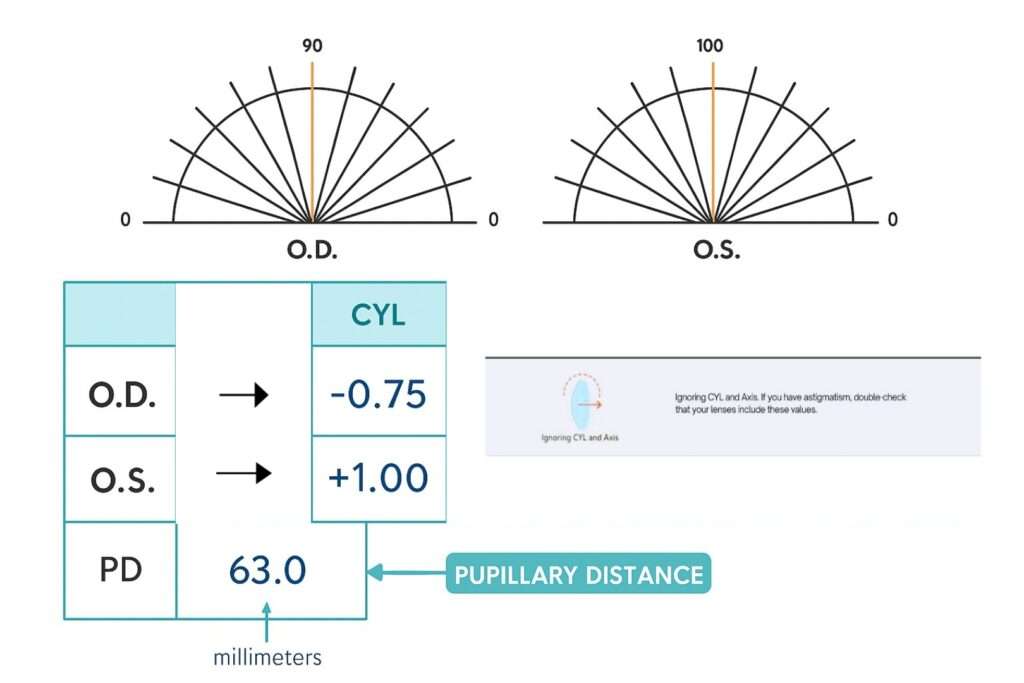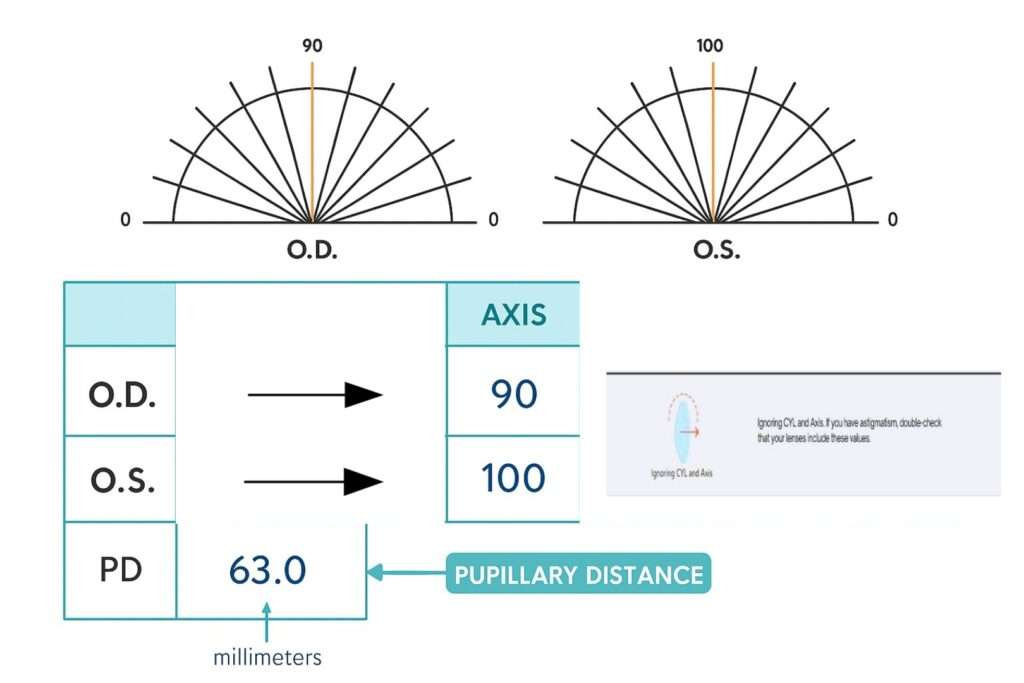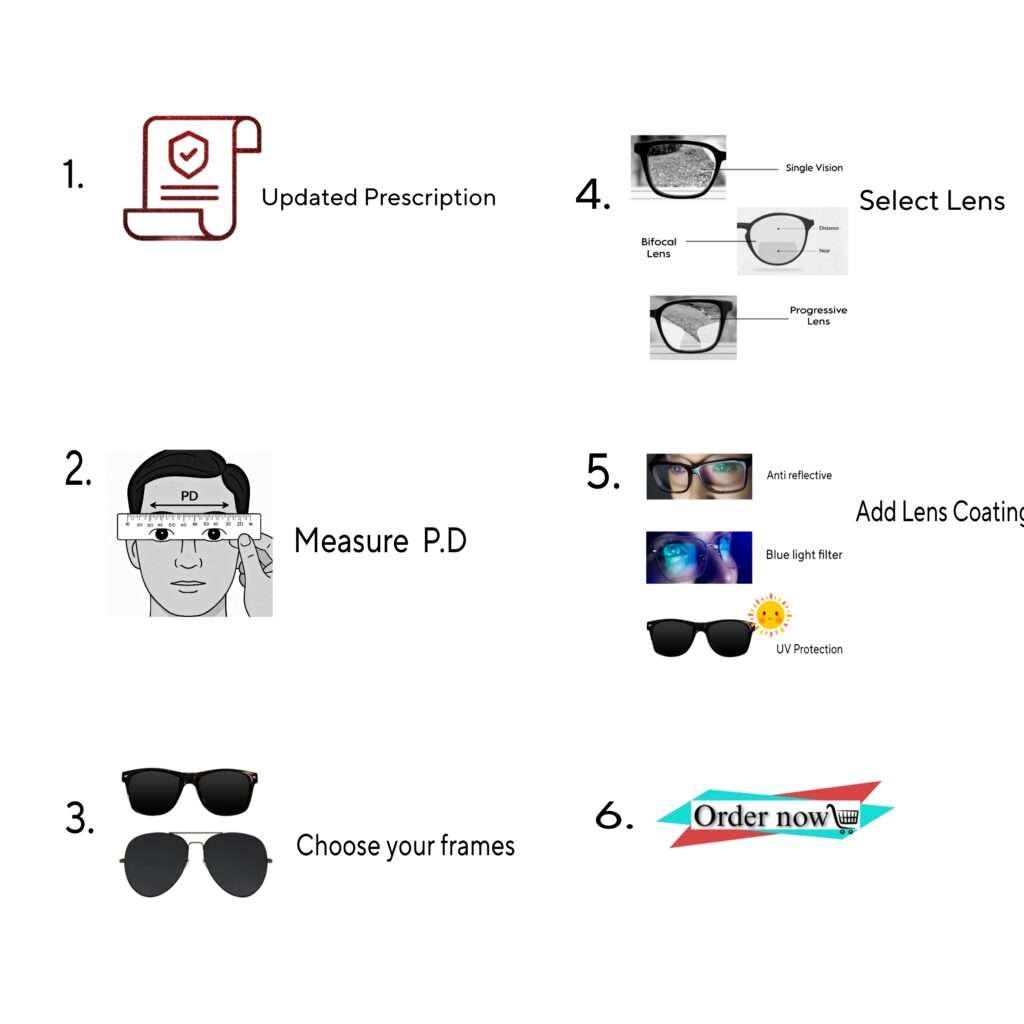How to Read Your Accurate Eyeglasses Prescription: A Beginner’s Guide
When you receive an eyeglasses prescription from your optometrist, the slip often looks like a coded message filled with abbreviations, numbers, and symbols. For anyone new to prescription glasses, this can feel confusing, but understanding it is the very first step in buying eyewear online with confidence. In this guide, we’ll break down each part of your prescription, provide examples, and explain why accurate understanding is essential for selecting your glasses at Visionaryie.com.
Why Understanding Your Accurate Eyeglasses Prescription Matters
Your eyeglasses prescription is tailored specifically to your eyes. If interpreted incorrectly, it can result in blurred vision, headaches, or even discomfort while wearing your glasses. When buying prescription glasses online, knowing what SPH, CYL, Axis, Add, and PD mean ensures you get the correct lenses and enjoy crystal-clear vision.
An accurate prescription helps you:
Choose the right lens type (single vision, bifocal, progressive).
Customize lens coatings (anti-reflective, blue-light filter, UV protection).
Order glasses confidently without unnecessary adjustments.
By the end of this blog, you’ll know exactly how to decode your Accurate eyeglasses prescription and place an order.

Common Terms Found in Your Prescription
SPH (Sphere)
SPH indicates the degree of nearsightedness or farsightedness in your eyes.
A negative (-) value means you are nearsighted (difficulty seeing distant objects).
A positive (+) value means you are farsighted (difficulty focusing on close objects).
Example: -2.50 SPH indicates mild to moderate nearsightedness.


CYL (Cylinder)
CYL refers to astigmatism, a condition where the eye’s cornea is irregularly shaped, causing blurred vision.
If the box is empty, it means you don’t have astigmatism.
If a number is present, it represents the lens correction required.
Example: -1.00 CYL means your lens needs slight correction for astigmatism.
Axis
Axis works with CYL to indicate the orientation of your astigmatism correction. It’s measured in degrees (1–180).
It doesn’t have a “+” or “-” sign.
It simply shows where the astigmatism correction should be applied.
Example: CYL -1.00 Axis 90 means astigmatism correction is aligned vertically.

Add (Addition)
Add refers to the additional magnifying power applied to the bottom of multifocal lenses for near tasks like reading.
Commonly used in bifocals and progressives.
Usually the same value for both eyes.
Example: +2.00 Add helps with reading fine print or using a smartphone.
PD (Pupillary Distance)
PD is the distance between the centers of your pupils in millimeters.
Essential for aligning lenses correctly with your eyes.
Can be a single number (e.g., 63mm) or split into two numbers (e.g., 31/32mm).
If PD is not included in your prescription, you can measure it at home with a ruler and mirror.
Example Eyeglasses Prescription Breakdown
Let’s look at an example prescription:
Right Eye (OD): -2.00 SPH, -0.50 CYL, Axis 90
Left Eye (OS): -1.50 SPH, -0.25 CYL, Axis 80
Add: +1.75
PD: 62mm
What this means:
The patient is mildly nearsighted in both eyes.
There is slight astigmatism correction needed.
The Add value indicates the person needs help with close-up reading.
PD ensures correct lens alignment for comfort.
How to Use Your Prescription When Ordering Online
Once you understand your eyeglasses prescription, ordering online becomes easy. Here’s a step-by-step process:
Get an Updated Prescription – Always ensure your prescription is current, ideally within the last 1–2 years.
Measure PD – If it’s missing, measure at home or ask your optician.
Choose Frames That Fit – Browse the wide collection of frames available at Visionaryie.com’s Prescription Glasses Collection.
Select Lens Type – Decide between single vision, bifocal, or progressive lenses.
Add Lens Coatings – Consider coatings like anti-glare, scratch-resistant, and blue-light filter for everyday use.
Review & Place Order – Double-check prescription numbers before checkout.


Prescription Glasses for Kids
Reading a child’s prescription is similar to an adult’s but requires extra attention since kids’ eyes are still developing.
Make sure the frames are lightweight and durable.
Confirm that lenses are impact-resistant for safety.
If you’re shopping for your child, explore options at Visionaryie.com’s Kids’ Prescription Glasses Collection.
Children may also need stronger Add values for reading or corrective support for conditions like lazy eye (amblyopia).
Why Accurate Prescription Reading Matters for Online Orders
Buying glasses online saves time and money, but the accuracy of your order depends entirely on your prescription details. If you misread SPH, CYL, or PD, the glasses may not provide clear vision.
That’s why understanding your eyeglasses prescription is key—it ensures that the glasses you order:
Match your vision correction needs.
Fit comfortably with correct lens alignment.
Provide clarity whether reading, driving, or working on screens.
For more expert insights on prescription eyewear, you can explore the Visionaryie Blog where topics like frame styles, coatings, and eye health are covered.
Conclusion
Decoding your eyeglasses prescription may seem daunting at first, but once you understand SPH, CYL, Axis, Add, and PD, it becomes simple. This knowledge allows you to order glasses confidently and ensure maximum comfort and clarity.
Whether you’re shopping for yourself or your child, accurate prescription reading ensures your glasses fit perfectly and enhance your vision. Explore a wide variety of frames and lenses tailored to your needs at Visionaryie.com.
